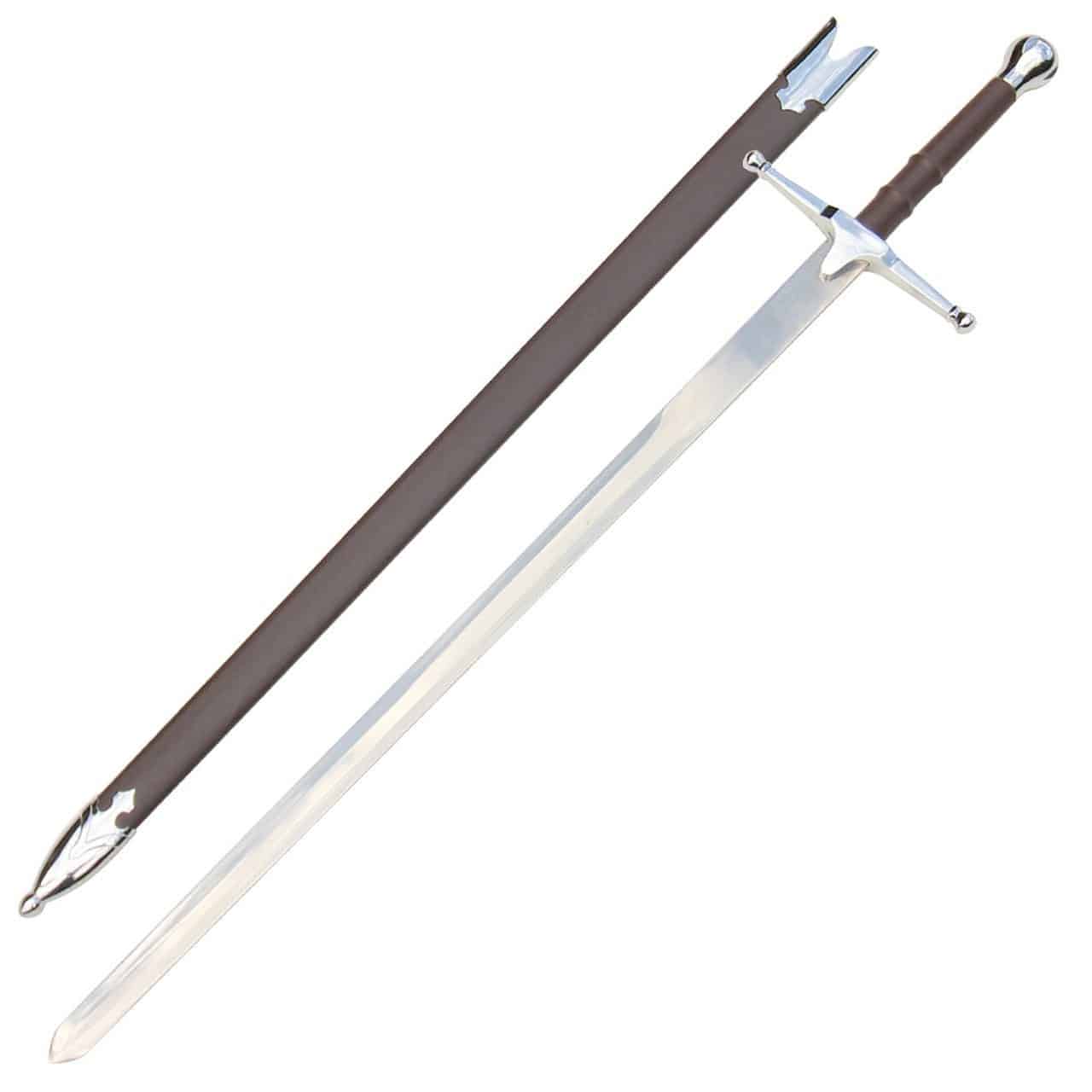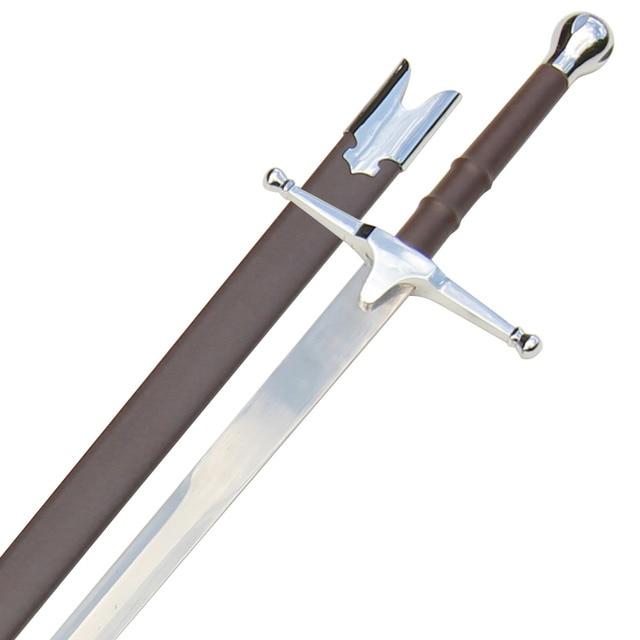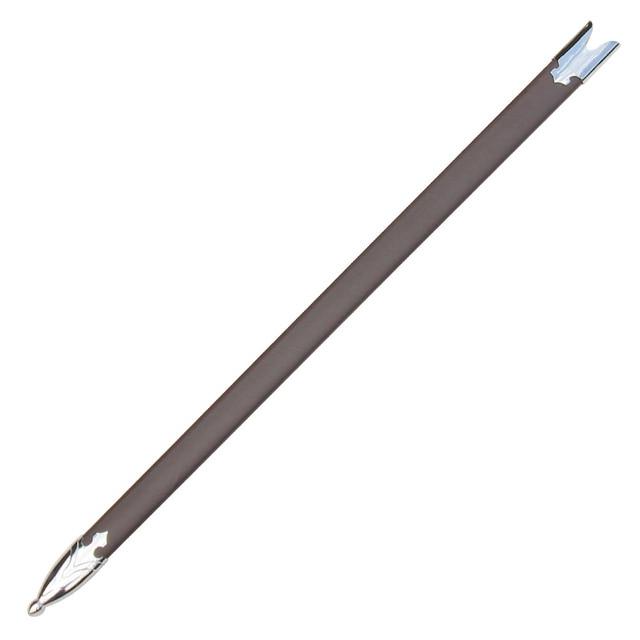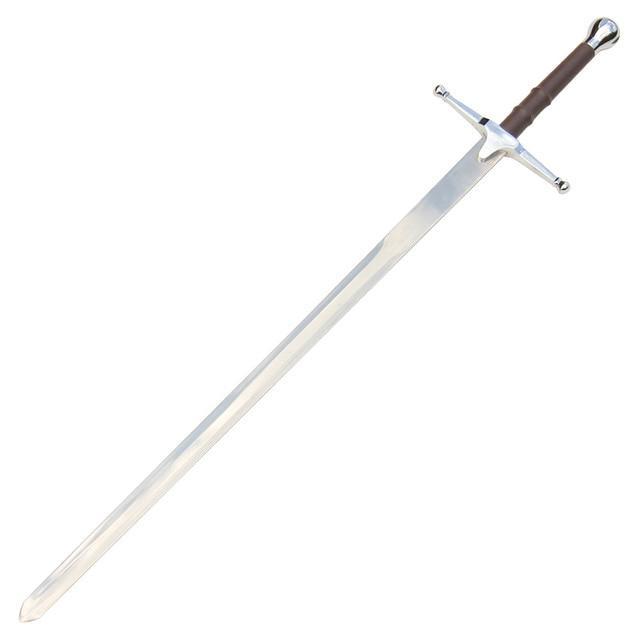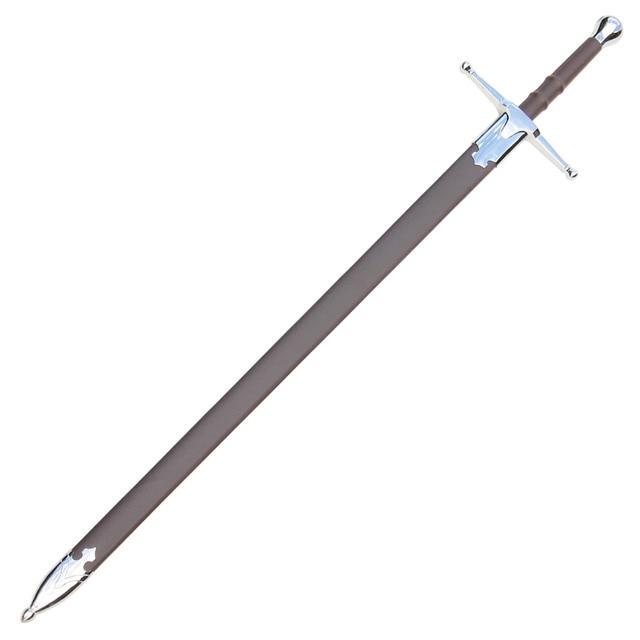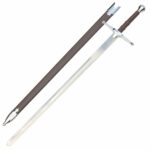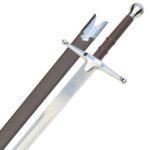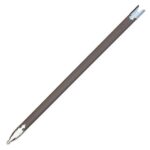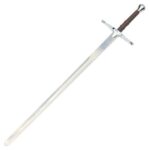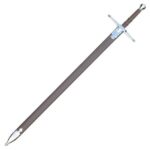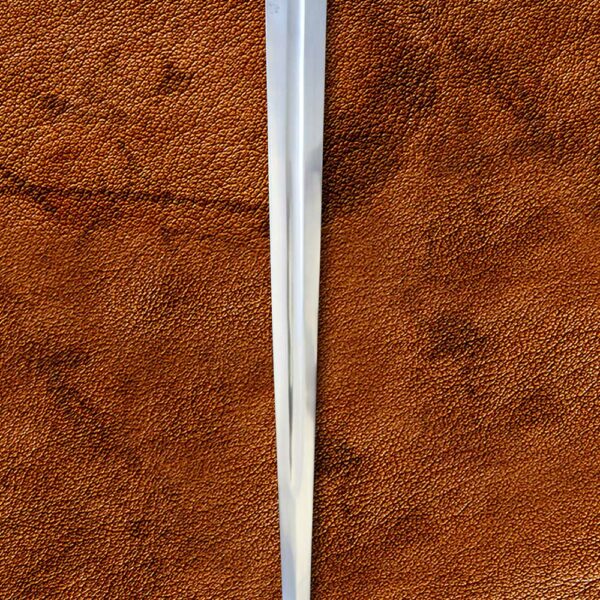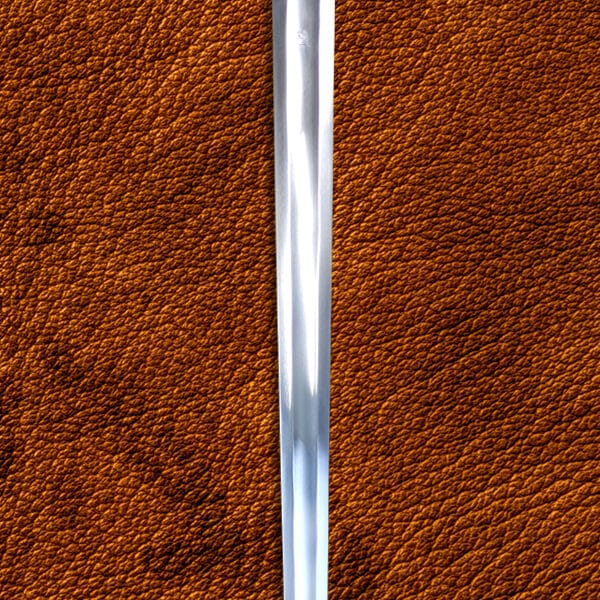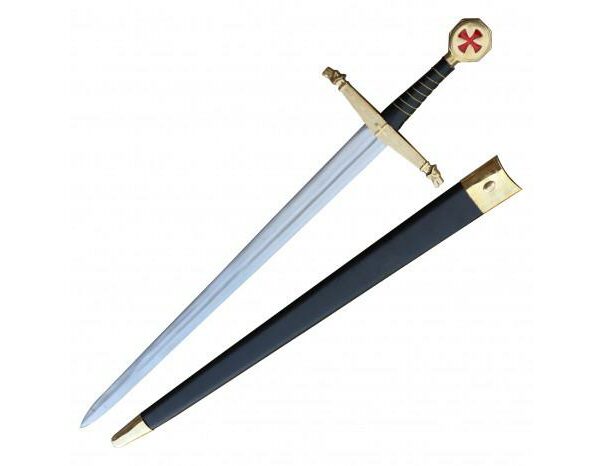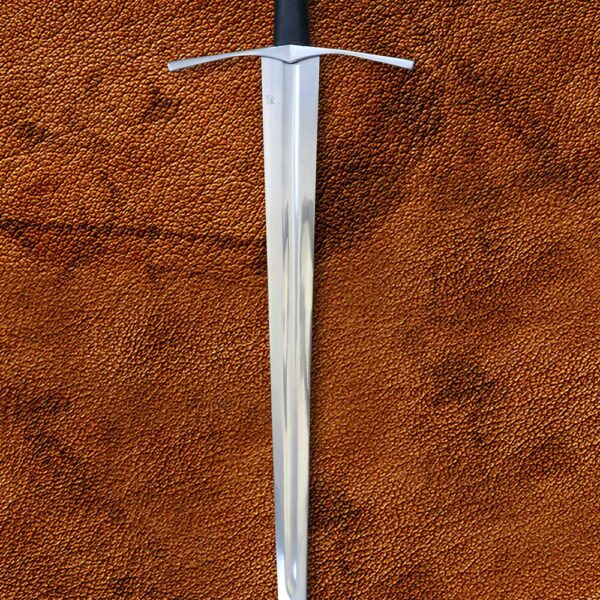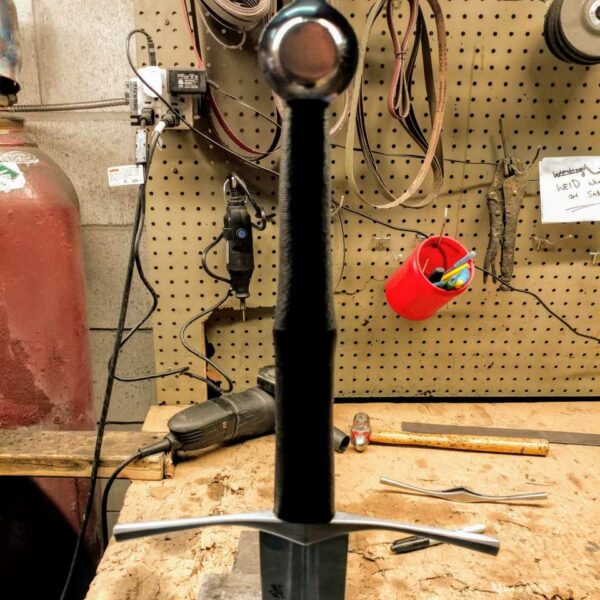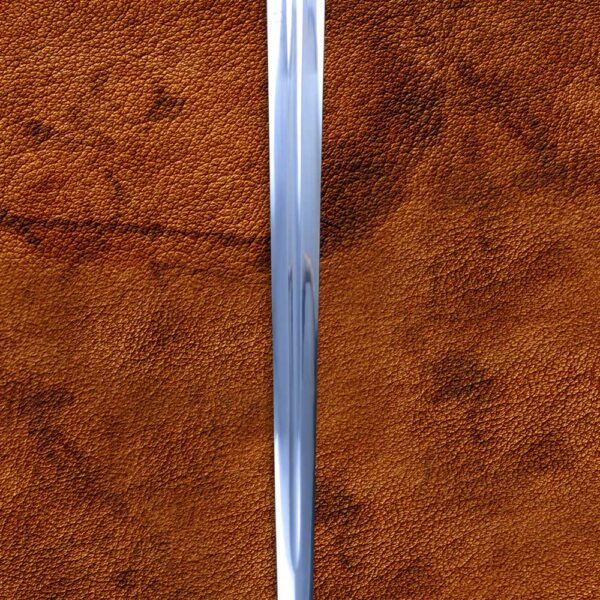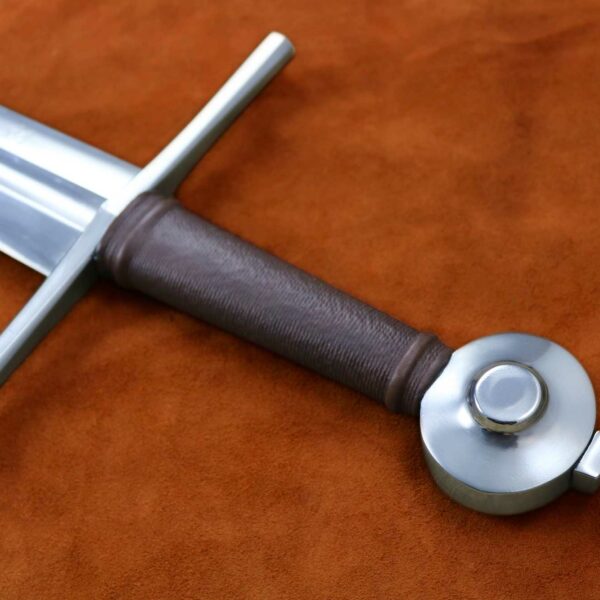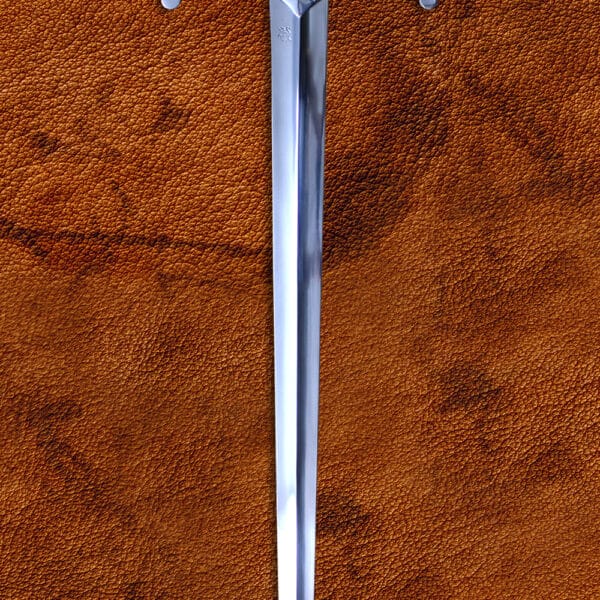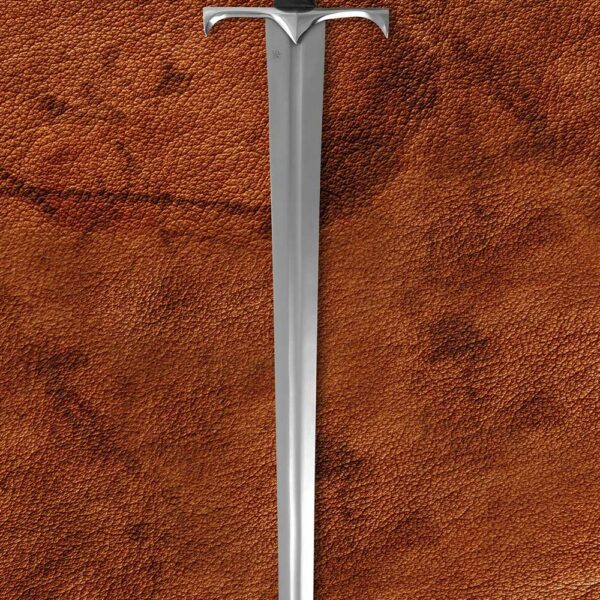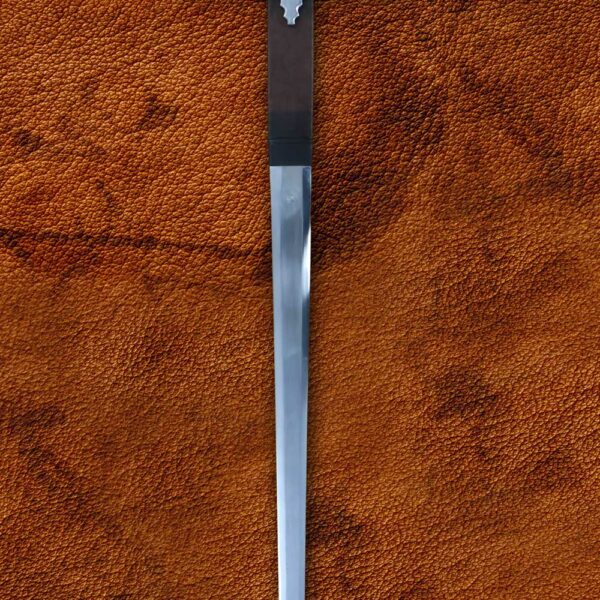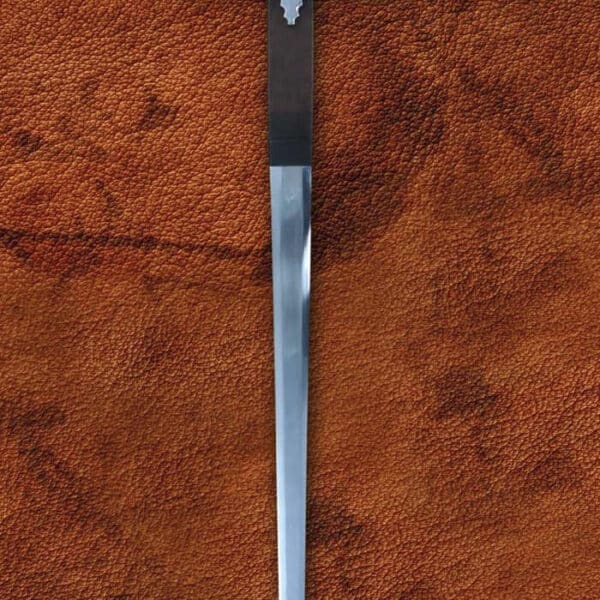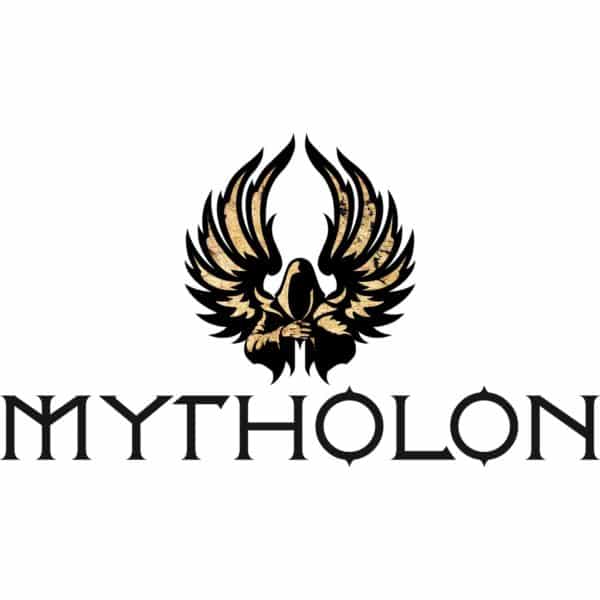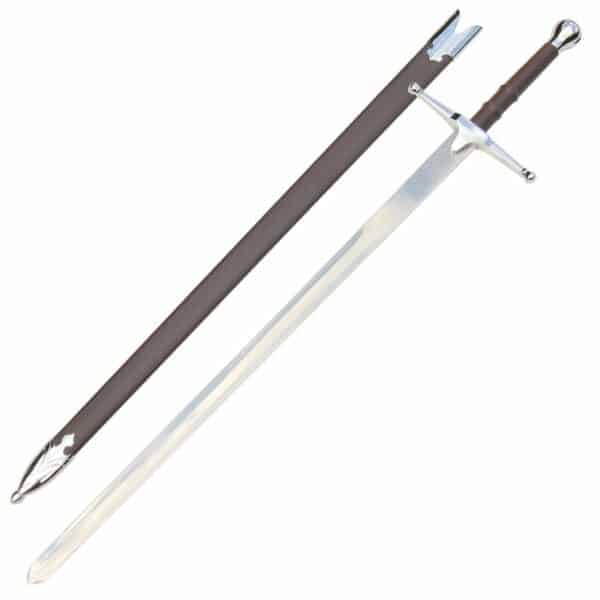Robert The Bruce Sword
(About): The Two-Handed Claymore of a Warrior-King
Striding out of the Highland mists, a proud warrior in traditional clan dress, wielding an enormous greatsword with terrifying ferocity, sweeping away all foes before them. Such is the lineage you stand in when you wield our Robert The Bruce Sword. It is a glorious Scottish claymore, a fitting tribute to Scotland’s legendary warrior-king.
A Shining Stainless Steel Blade
As befits only the fiercest of Scottish warriors, King Robert the Bruce’s sword has an enormous blade, almost three feet from forte to point. It conforms to Type XIIIa as set out in historian Ewart Oakeshott’s typology of medieval swords – these are a subset of huge two-handed greatswords that emerged during the Crusader period, a logical extrapolation from early-medieval single-hand swords scaled up to smash through the ever-improving armor of the era. Our Robert the Bruce Sword’s blade has extremely long parallel edges, with a spatulate (rounded) tip: this tells us that it is a weapon in which thrusting blows were an afterthought; it was forged to have the maximum possible cutting length in wide swinging arcs. The blade is hexagonal in cross-section, being an excellent trade off between the flexible lenticular early-medieval cutting swords, and the rigid diamond-cross-section thrusting swords of the late-medieval era. This cross-section means that it would have delivered enormous percussive force as well as cutting power, being able to batter heavily armored opponents into submission if wielded by one with a stature as great as that of King Robert. The blade is unfullered: this was a common feature on greatswords of this type. The prime purpose of a fuller is to reduce the weight of the blade and to distribute the weight of it in such a way to move the point-of-balance closer to the hilt, resulting in a lighter but more agile and maneuverable sword. However, agility and maneuverability are not even in the same dictionary as the claymore! A significant proportion of the weight of the Type XIIIa’s blade is distributed toward the tip of its unfullered blade, further augmenting its crushing power. The forte (the strongest part of the blade where it meets the hilt) is augmented by a long ricasso – a blunted length of edge before the hilt. This innovation, often seen on large greatswords in the Late Medieval era, opened up new methods of wielding swords: now, warriors could grab onto the blade below the grip, wielding it point-down like a spear, or even using the quillons like a pick-axe. Our Robert the Bruce Sword has a fearsome war-sword blade.
The blade is made from handsomely polished stainless steel with a rebated (blunt) edge, meaning that it is absolutely perfect for roleplay and non-contact re-enactment – although we recommend keeping it dry at all times, it’s much more corrosion resistant than similar steel blades.
A Masterwork Scots Hilt by the Craftsmen of the Islands
The hilt of our Robert The Bruce sword replica is a classic of its type, drawing together many of the simple, brutal features of the late-medieval longsword. The cross-guard is a hefty chromed metal bar with wide, straight quillons which have knobbed terminations. The quillon block is enormous and sturdy, extending up the blade for maximum stability. The handgrip is a generous two hander wrapped in faux leather, with two ridges for extra grip and an elegant tail for ease of handling. The pommel is a hefty spherical Type R, in Oakeshott’s typology – unsurprisingly, such large swords required significant counterweights to bring the balance point back toward the handgrip, in order to make them at least somewhat wieldy on the battlefield. As well, our Robert the Bruce sword is paired with a handsome scabbard wrapped in the same faux leather to match the handgrip, featuring a chromed locket and chape.
From pommel to point, our Robert The Bruce Sword is a fantastic replica weapon that would do sterling (or should that be ‘Stirling’) service as a re-enactment or Renn Faire sword for a Scottish knight or Highlands galloglass mercenary – or even for a costume depicting King Robert the Bruce himself! It would also do a fantastic job as part of a fantasy roleplay outfit: as the greatsword of a fierce barbarian berzerker or the trusty sword of a loyal knight. You could pair it with our Celtic leather fantasy armor for a stunning mystical aspect. How ever you wield it, its brave heart will never let you down.
(History): The Two Handed Claymore
Our Robert The Bruce Sword is a fantastic example of the late-medieval claymores that were wielded by Scottish highland mercenaries. Although the tradition of greatsword-wielding cannot be traced much earlier than the 15th century, it has become an instantly recognisable symbol of Scottish martial culture, wrapped up with Scottish nationalist impetus even to the modern day.
The word we use to describe the large two-handed longswords that emerged amongst Highland clans in the 1400s CE, ‘claymore’, is somewhat of an anachronism. It is an anglicisation of the Gaelic ‘claidheamh mór’, literally ‘big sword’ – and it appeared in English only in the late 18th-century, along with a more inexact usage of ‘claymore’ applied to the basket-hilted single-handed Scottish broadsword. The adoption of the claymore in Scotland, particularly strongly by warriors from the Highlands and Islands, is closely related to the swords emerging in the era in continental Europe. Highland society was tough, hard-scrabble agriculture and farming producing a fierce, martial people of Norse ancestry with spare sons who could not be fed by the meagre land. Thus, many Highlanders became mercenaries, serving abroad from the 13th century onward, first in Irish armies, and then later in the constantly-warring armies in Germany, Italy and Switzerland. These men were known as galloglasses, another anglicised loan-word, this time from Irish ‘gall óglaigh’, meaning ‘foreign warrior’ – they were also sometimes known as ‘Redshanks’ (‘red thighs’), for their wearing of plaid, bare legs and no shoes, even in freezing weather! When they returned home from these continental wars, they brought home their wealth – and the enormous two-handed swords used in the pike-dominated battles in central Europe. Galloglasses, and increasingly Highland warriors in general, would commission fine blades from Rhineish sword-makers, which would be hilted in the Highlands by Gaelic smiths with distinctively Scottish styles of hilt.
Thus, the truly Scottish claymore was born. It was used for almost three centuries, and gained a deserved reputation as a devastating weapon. It was a key component of the legendary ‘Highland Charge’ as its era overlapped with the beginning of the age of gunpowder: a single volley of musket-fire, followed by a headlong charge with claymores and broadswords. We feel that it is the perfect weapon to represent one of the finest figures in Scottish medieval history, second only in public recognition to his contemporary, Sir William Wallace, and the man who would secure Scotland’s freedom from English rule for more than three hundred years: Robert I, King of Scots – better known as Robert The Bruce.
(History): The Rise of Robert the Bruce
The future King of Scotland was born in 1274 into a Scottish society at the border of two worlds. The Bruce were an Anglo-Norman family – Robert’s sixth-great-grandfather had arrived in Scotland a century earlier as a vassal of the conquering Scottish king David I, and they were awarded fiefdom in Annandale, at the border with the Kingdom of England. The Bruce demesne was a mix of feudalised, Middle English-speaking lands, with their more northern lands being thoroughly Celtic. Young Robert was schooled in the dominant Anglo-Norman, but would probably have also spoken Middle English and the Gaelic of his mother’s branch of the family – we see the evolution of this period’s knightly virtues in Robert, combining schooling in history and philosophy with the martial drills of lance and sword, as well as courtly etiquette and hunting. It seems probable that Robert and his brother Edward were warded at a knightly estate in England when young – a common practise designed to foster close bonds between feudal families.
Bruce’s world was turned upside-down, just as he came of age. The political crisis known as the ‘Great Cause’, which would lead to the Scottish Wars of Independence, broke out in 1290 CE, when Robert was sixteen. The untimely death of Scottish King Alexander III without an heir left only twelve-year-old Margaret of Norway eligible for the throne, and she died soon after. In the ensuing power vacuum, thirteen pretenders lodged their claim. Robert’s family, as long-time right-hands of King Alexander, pleaded a claim based on tanistry, the ancient Celtic practise of handing power to the second-in-command. But their claim was frustrated when English King Edward I intervened to award the crown to his own cousin John Baliol. Although the threat of civil war was averted for the time being, Baliol was widely perceived as a puppet king, and Bruce’s old rivals the Comyns, led by John Comyn, lent their support to the new regime. Robert would find himself at the heart of Scottish politics for the rest of his life.
Young Robert at War
As relations between the Scottish lords and their King worsened, the Bruce’s found themselves outcast from Scotland, and the Comyns took the Bruces’ ancestral home of Annandale. Soon after, they then launched a surprise attack on Carlisle. This was both an English stronghold, and also where the Bruces had fled, attempting to kill two birds with one stone. The Bruces found themselves initially on the side of the English, allying with the southern Kingdom to drive the Comyns out from their lands. But not long after this, a much larger rebellion of Scottish knights led by James Stewart broke out – and the 22-year old Robert joined it. It seems that Robert had parted ways with his father, who withdrew again to English lands. Robert would not look back. He quickly entered the leadership of the rebellion and fought the English with his Robert The Bruce Sword. Fighting to a stalemate, he secured his lands in return for fealty to Edward at the Capitulation of Irvine. Whilst the history is unclear at this stage, it is certain that Bruce took no further part in the fighting during the campaign of William Wallace, where he secured a famous victory at Stirling Bridge, but was then defeated at Falkirk. After this defeat, Wallace resigned his Guardianship of Scotland, and Bruce was promoted in his stead, though he had to share the role with his hated rival John Comyn. While Wallace had lit his powder, Bruce had his still dry…
From his rise to the rank of Guardian of Scotland in 1298, Bruce deftly navigated the choppy waters of the feudal maelstrom of divided loyalties between Scotland and England, fighting numerous small campaigns against the English. Despite finally surrendering to the English in 1304, he and his Scottish ally William Lamberton signed a secret pact which bound them together against the victorious King Edward, even as the English King sought to dismember Scotland utterly and make it into a client government. Bruce was becoming the key figure in Scottish resistance, and one of the few claimants at the Great Cause remaining. He had but one obstacle: John Comyn.
The Killing of John Comyn
The tale goes that Comyn finally agreed to surrender his own claim to the Scottish throne in favour of Bruce, in preparation for another war against King Edward. But the English King suspected Bruce of this treason, and the King finally moved to arrest him in 1305 CE. Bruce learned of the King’s intention and fled – but Comyn betrayed their agreement to the King! Agreeing to meet with Bruce, Comyn travelled to Greyfriars Monastery in Dumfries, where he was accused of treachery by Bruce – and the men came to blows. Bruce’s sword rang off Comyn’s as they settled their feud once and for all, and Bruce struck Comyn dead. Bruce immediately rallied his supporters and launched a raid on the English garrison at Dumfries, launching his final campaign as Robert the Bruce.
All other claimants now recognised Robert as the only man capable of filling the throne. A towering military leader, a shrew politician, and a fierce fighter, Bruce was crowned King Robert I of the Scots on 25th March 1306 by his sworn-brother William Lamberton, aged just 32. Though the security of his throne was a long campaign ahead, he could now raise King Robert the Bruce’s sword against the English in his own right.
If you’re a Scottish Swords fan like ourselves you’re gonna want to check out this beauty!
Technical Specification:
- Total length: 34 inches
- Blade length: 32 ½ inches
- Blade material: Stainless steel
- Guard and pommel material: Chromed metal
- Grip material: Faux leather

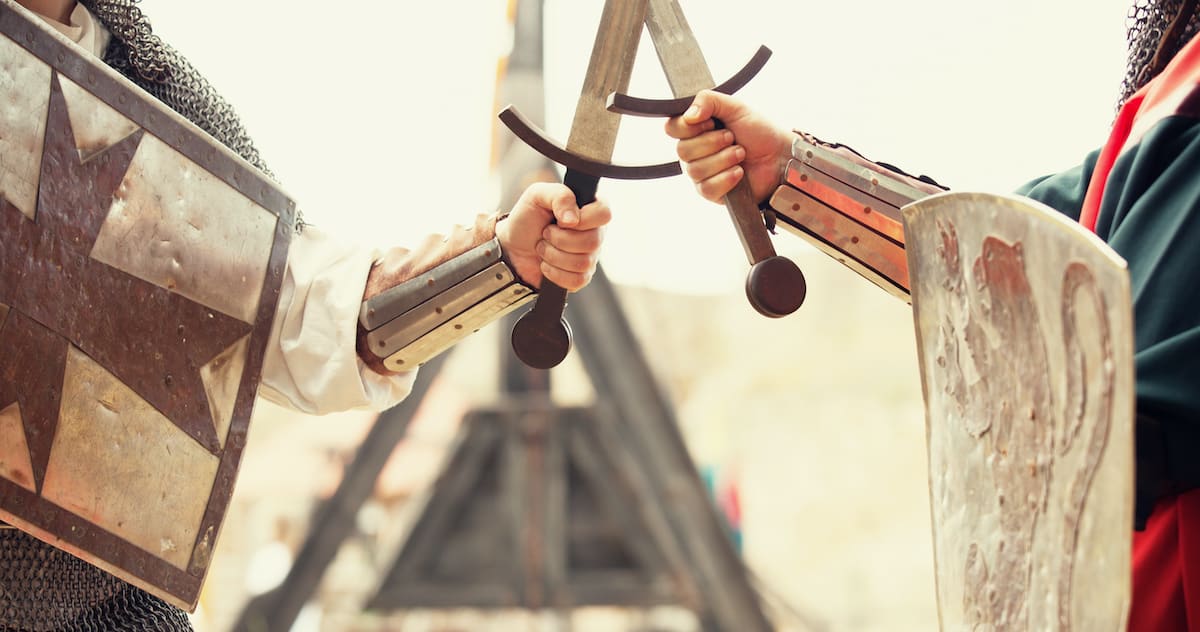 Historical Swords
Historical Swords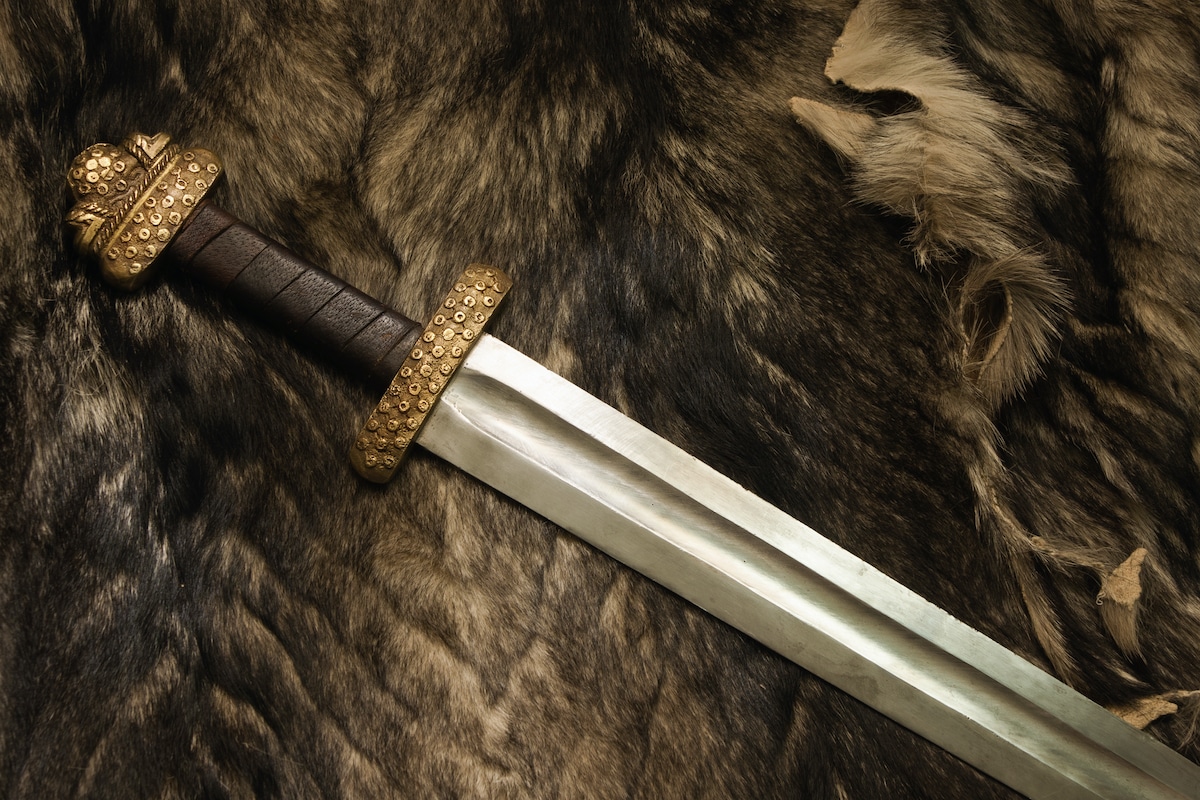 Norse & Viking Swords
Norse & Viking Swords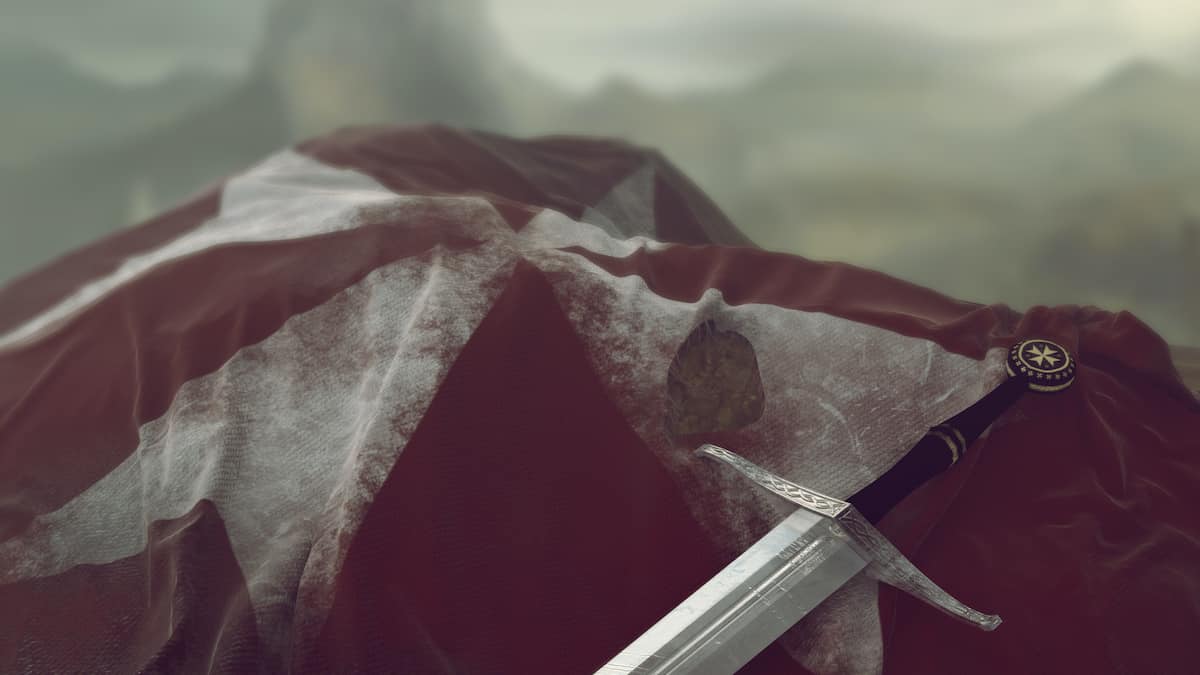 Templar Swords
Templar Swords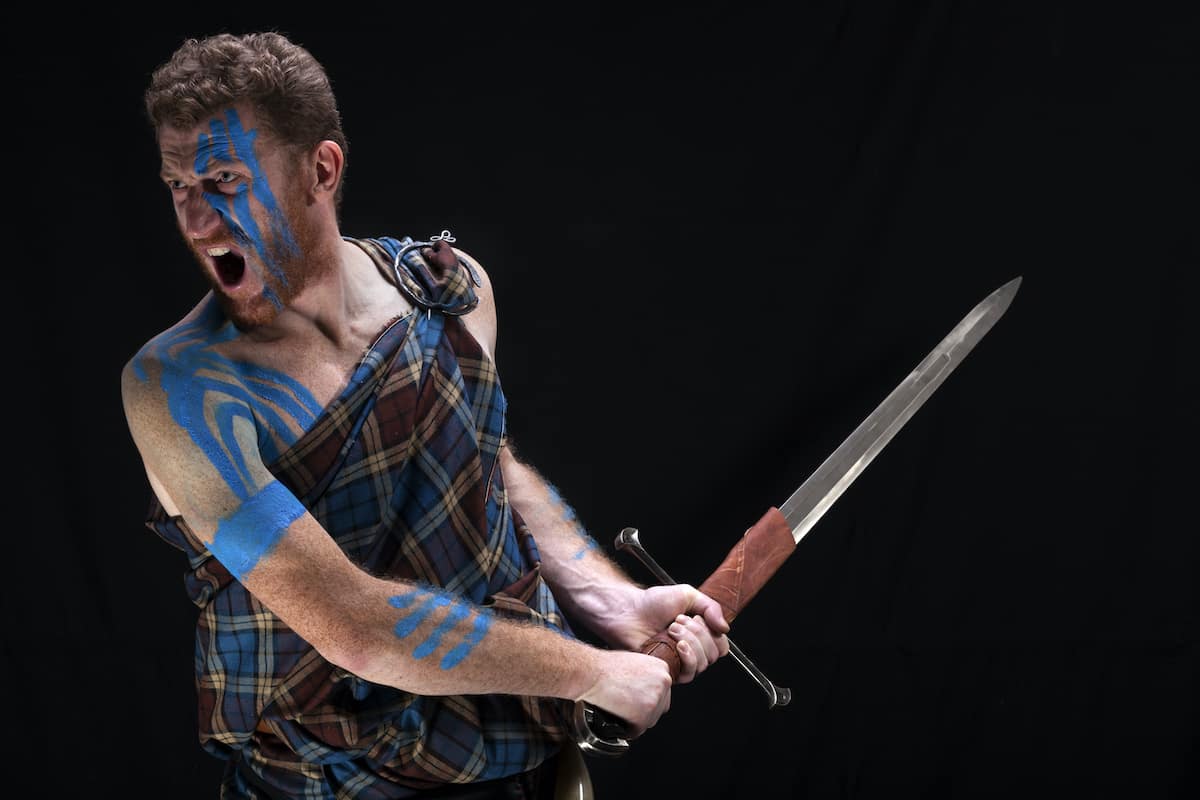 Claymore Swords
Claymore Swords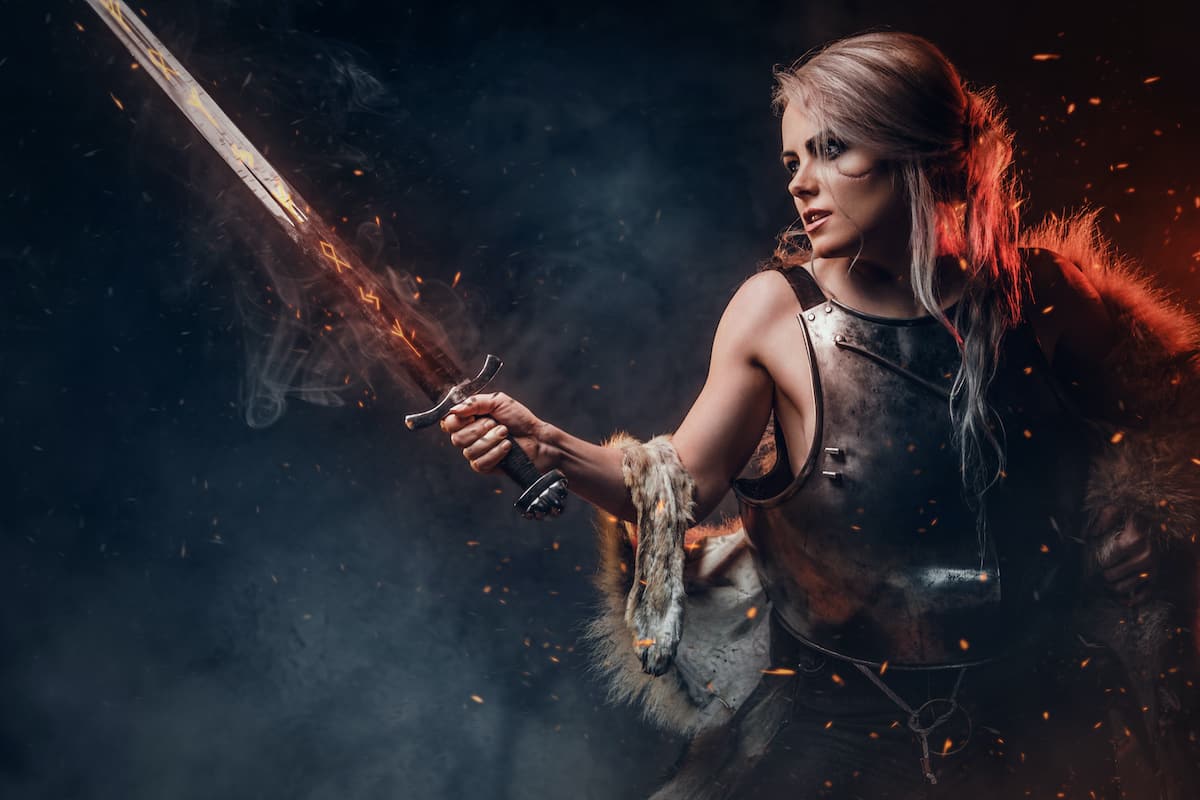 Fantasy Swords
Fantasy Swords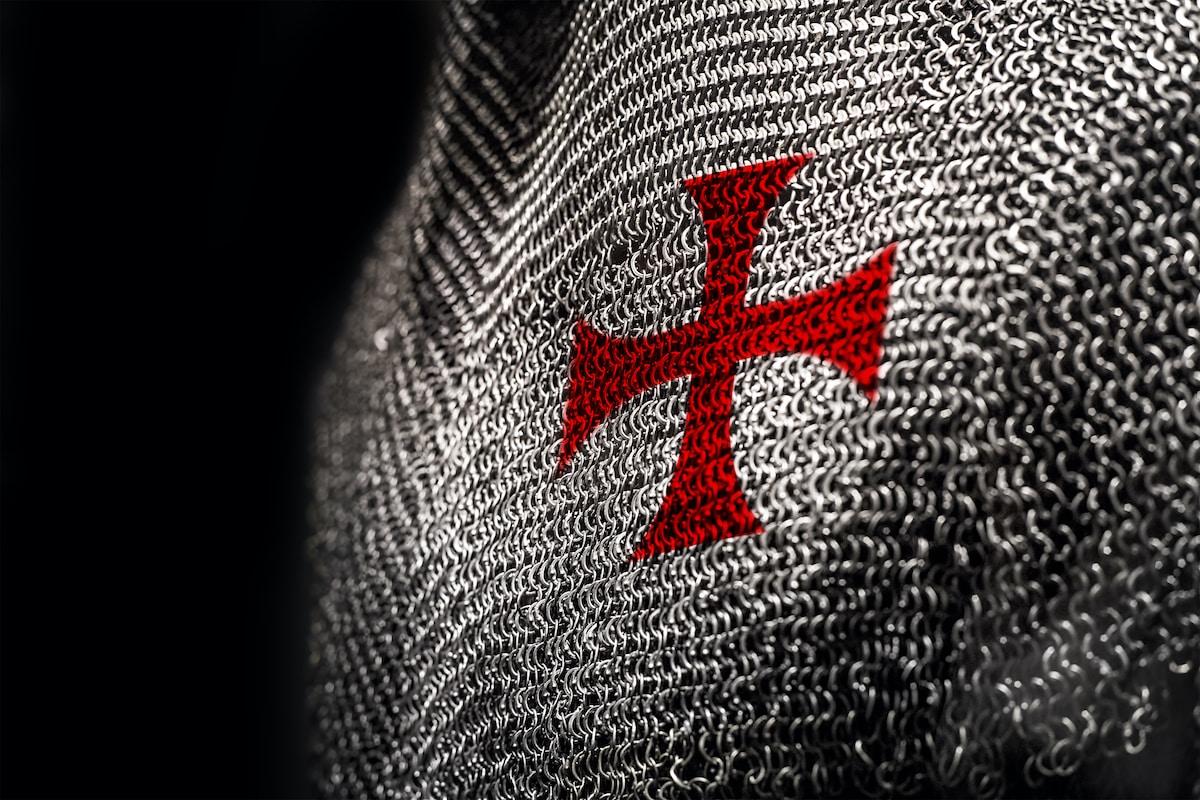 Chainmail
Chainmail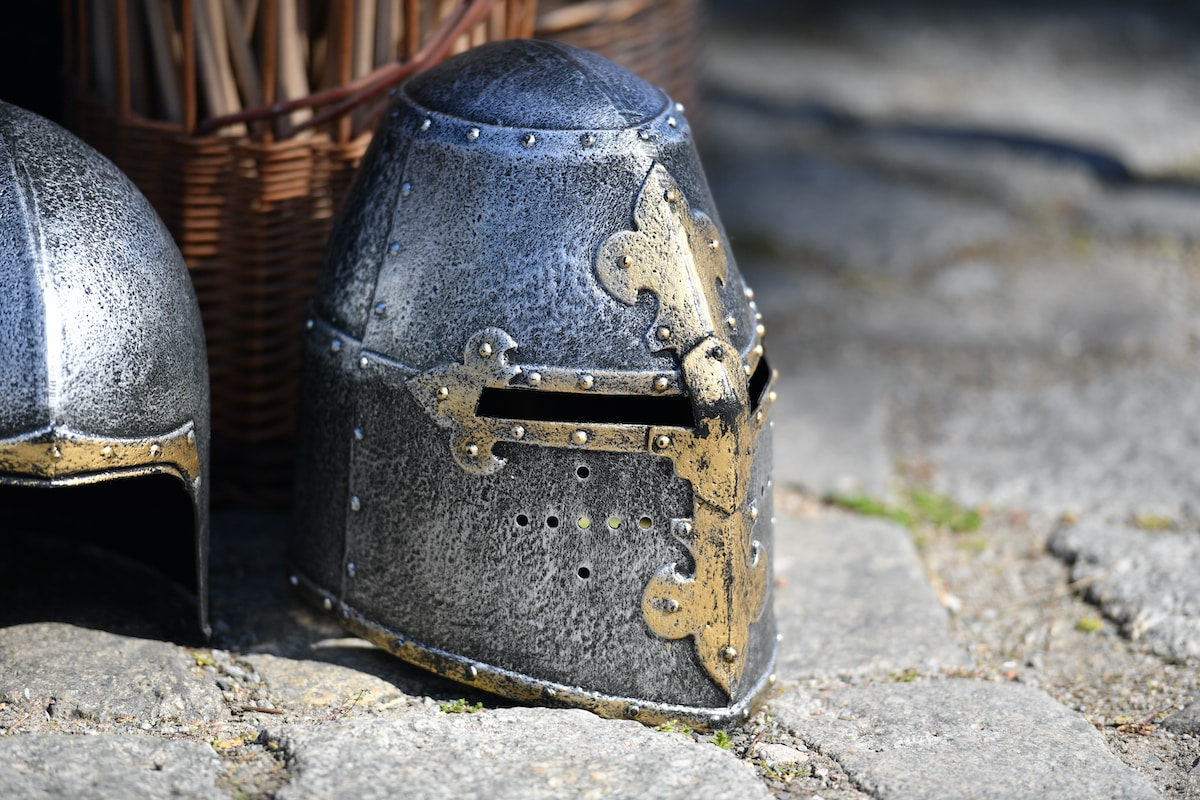 Helmets
Helmets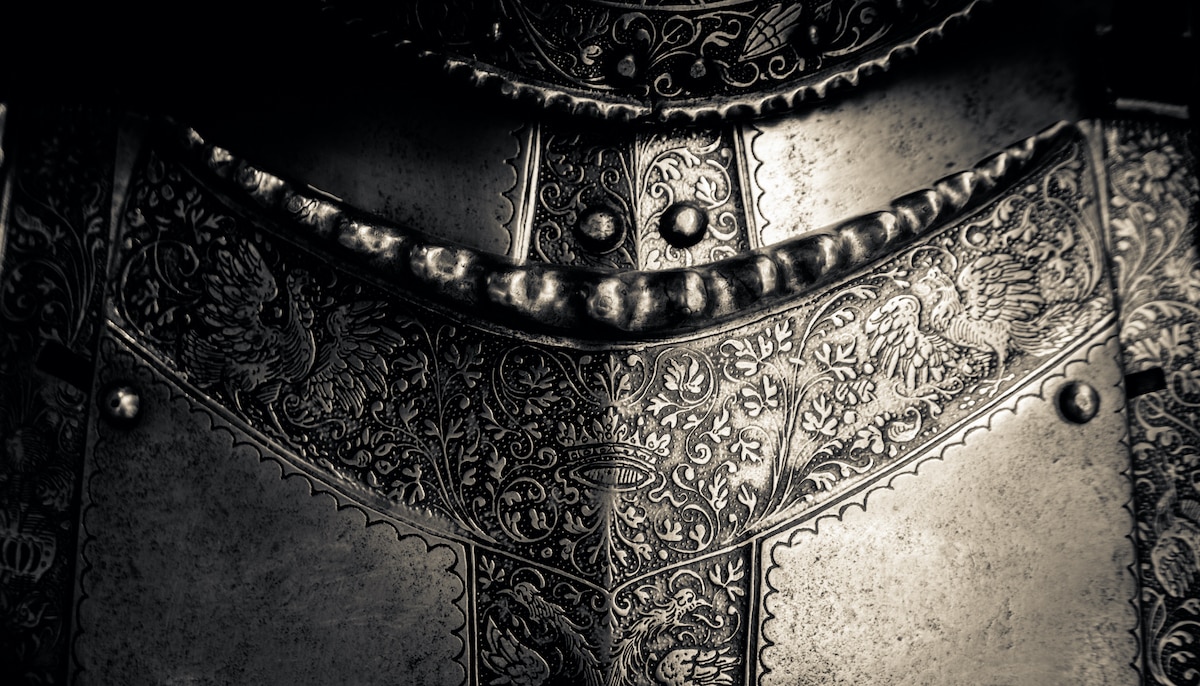 Torso Armor
Torso Armor Bracers and Arm Protection
Bracers and Arm Protection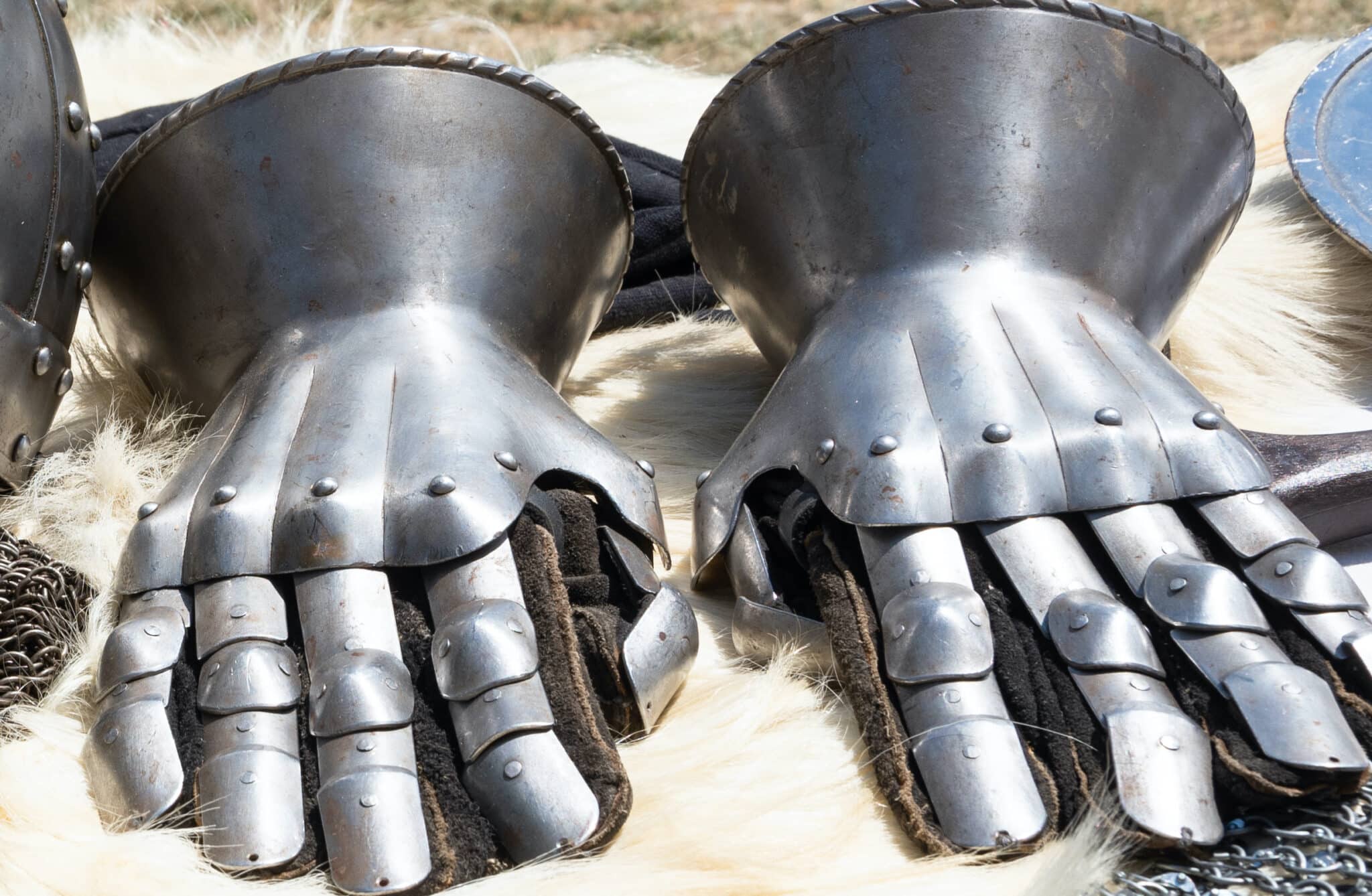 Gauntlets
Gauntlets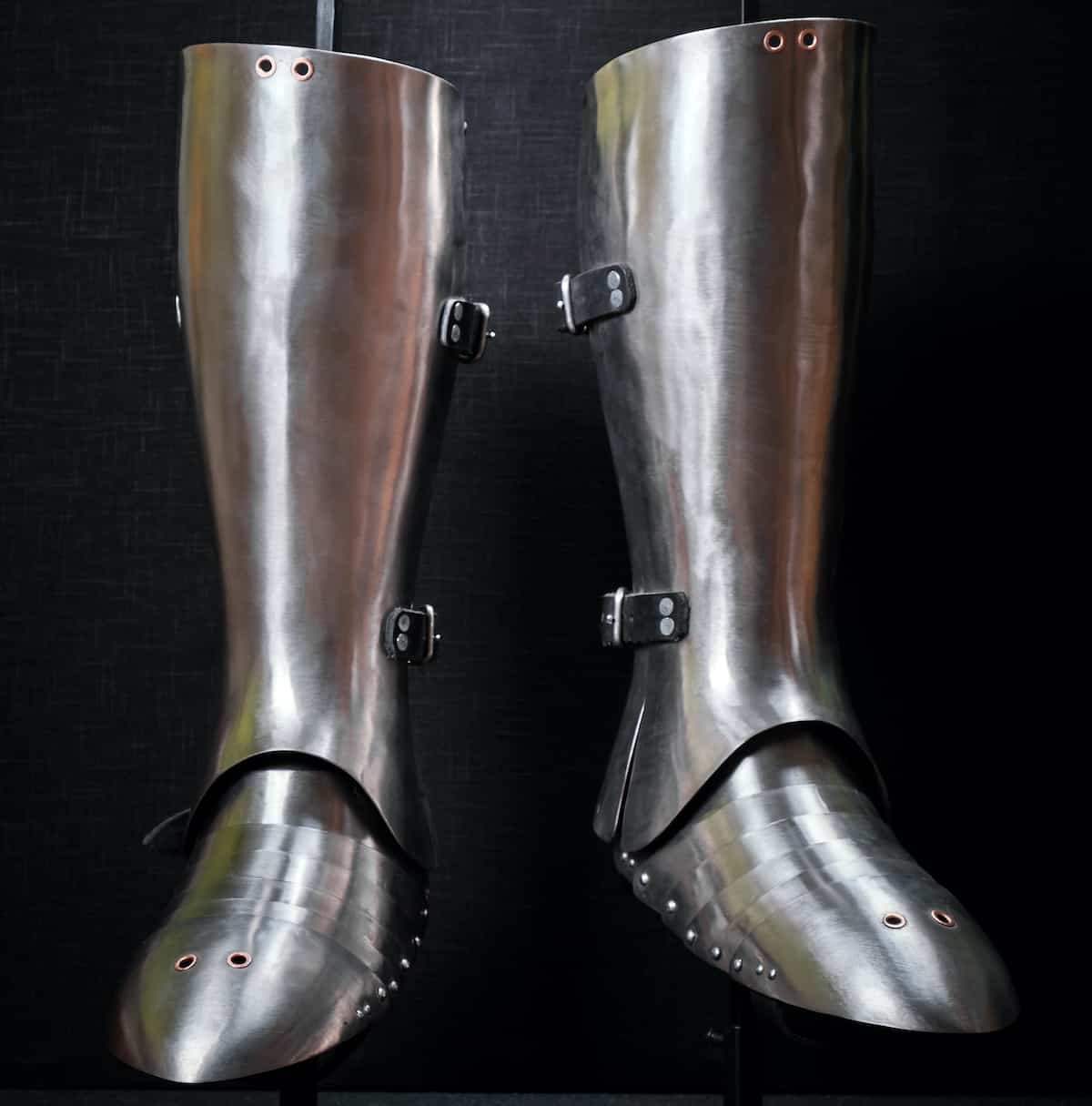 Leg Armor
Leg Armor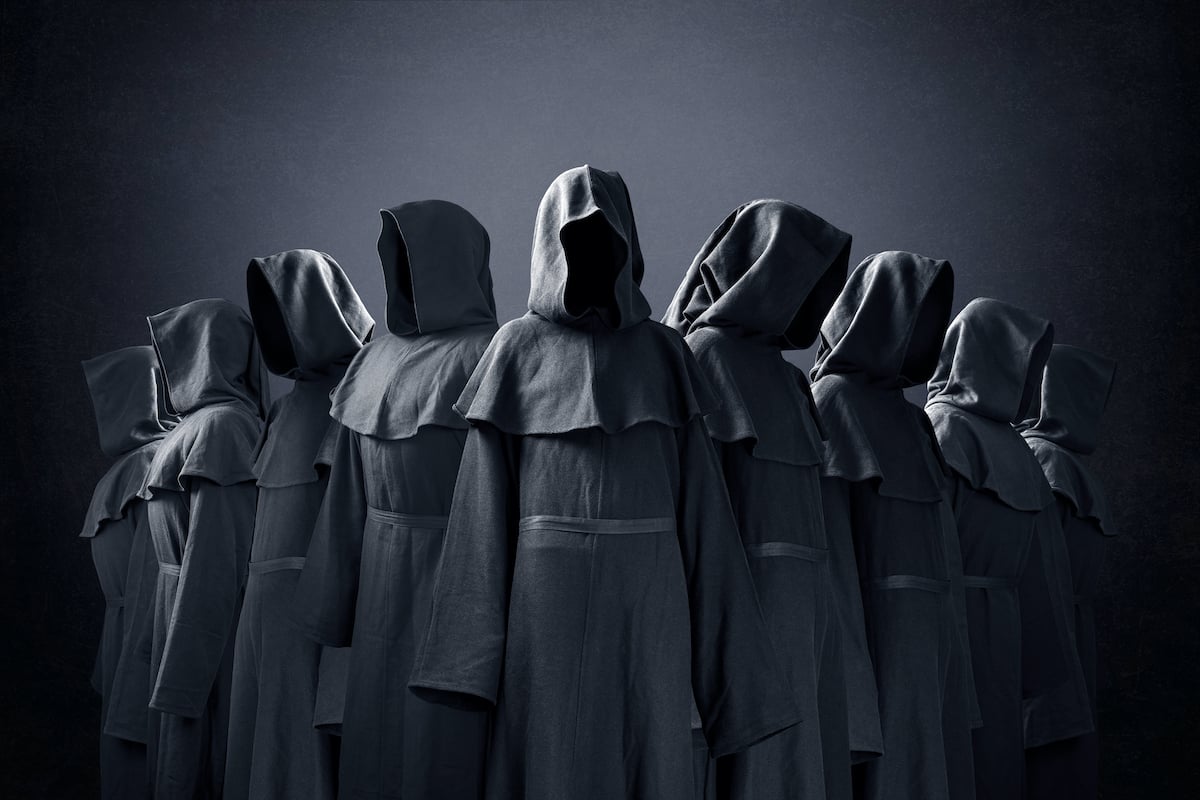 Cloaks
Cloaks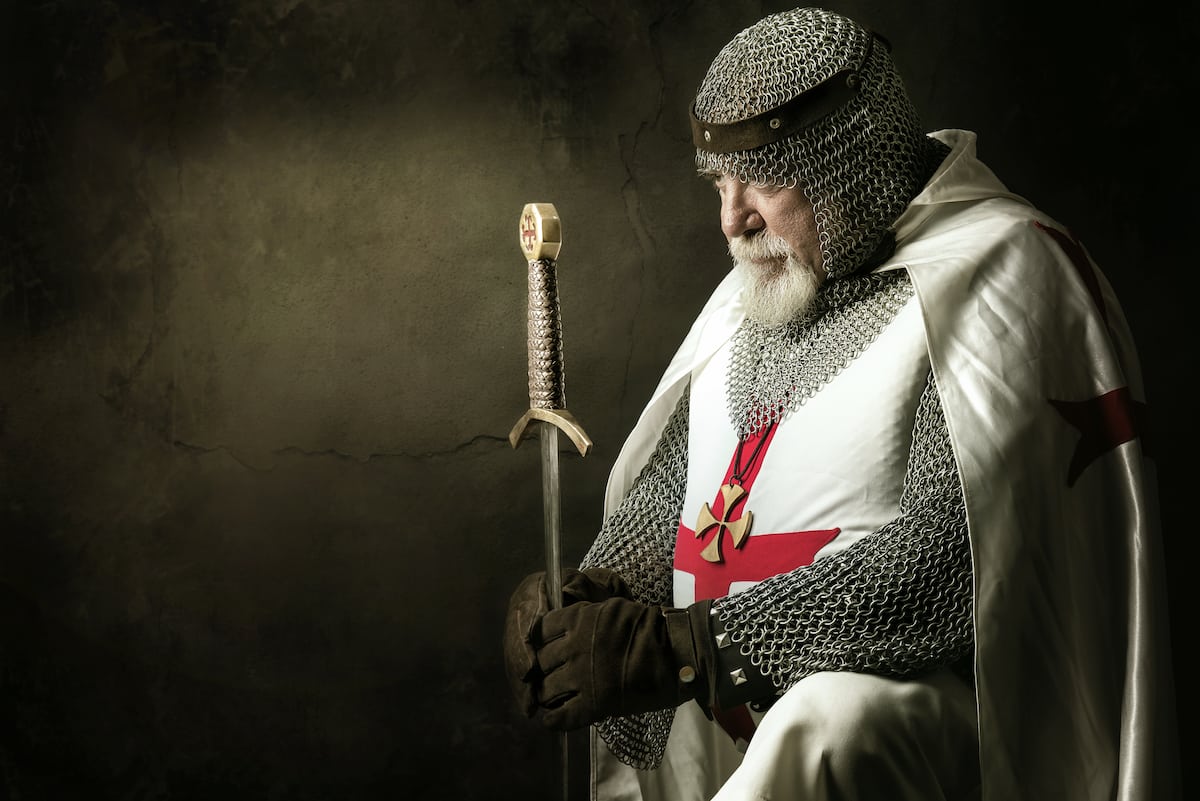 Tabards
Tabards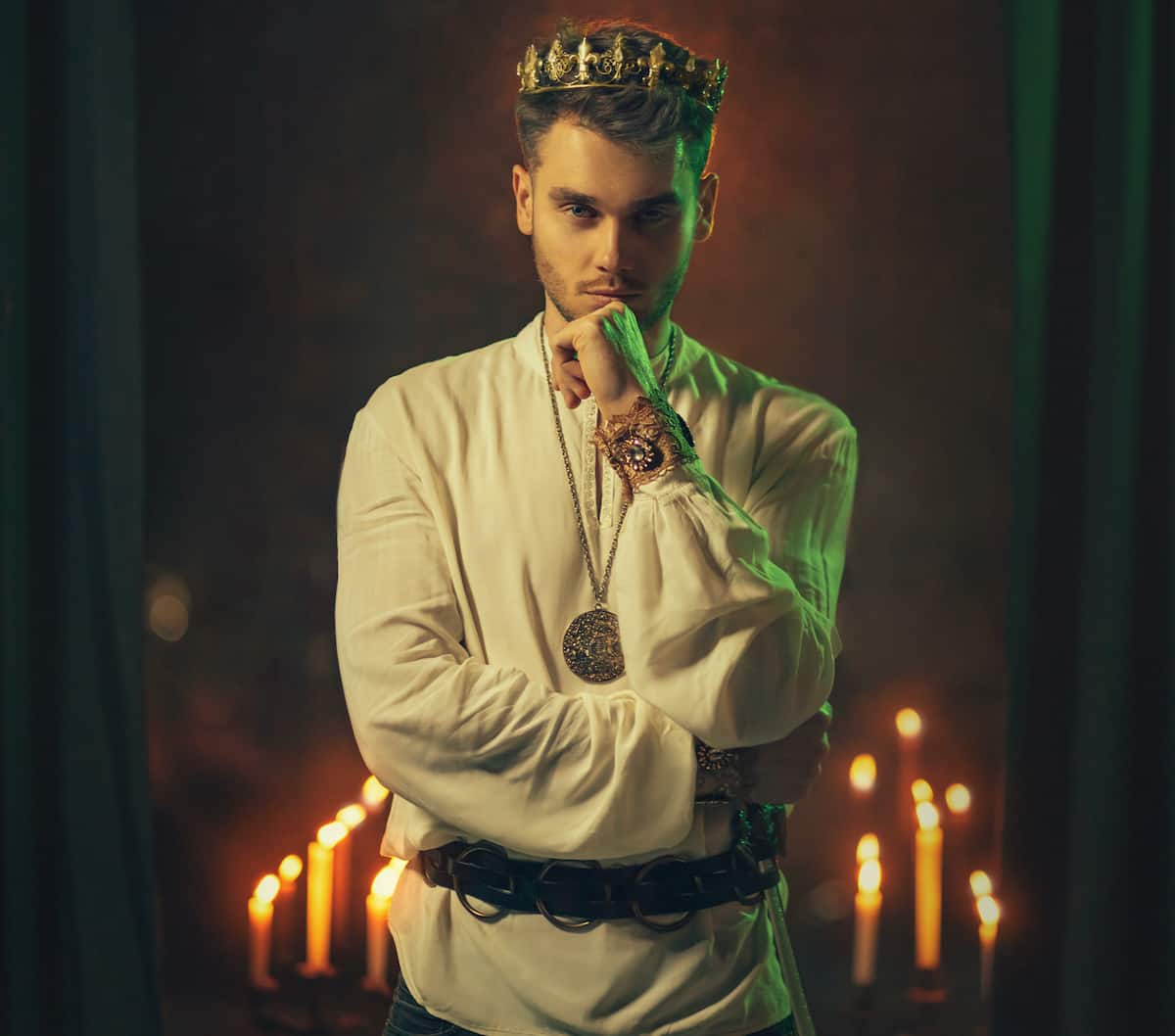 Shirts
Shirts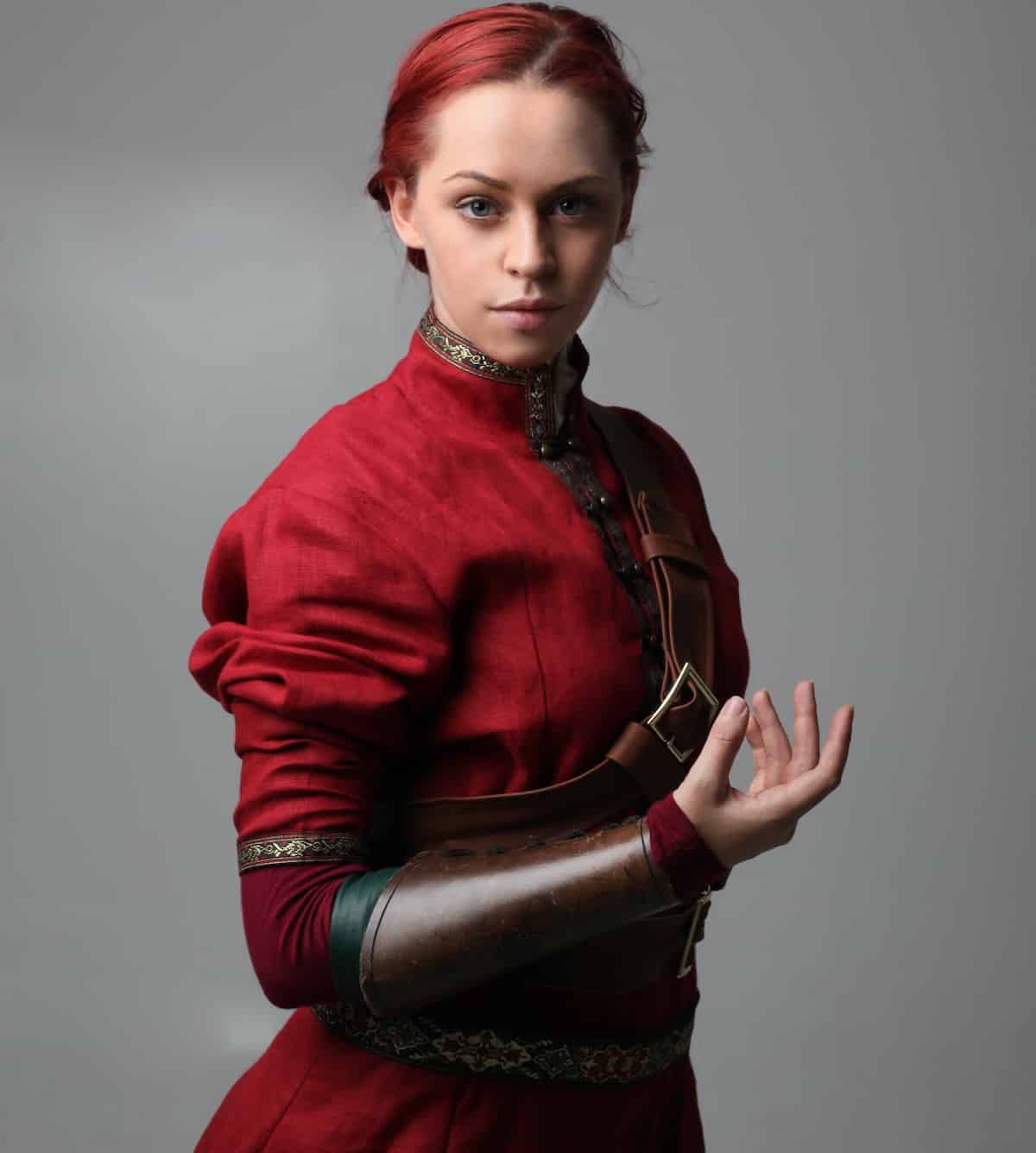 Tunics
Tunics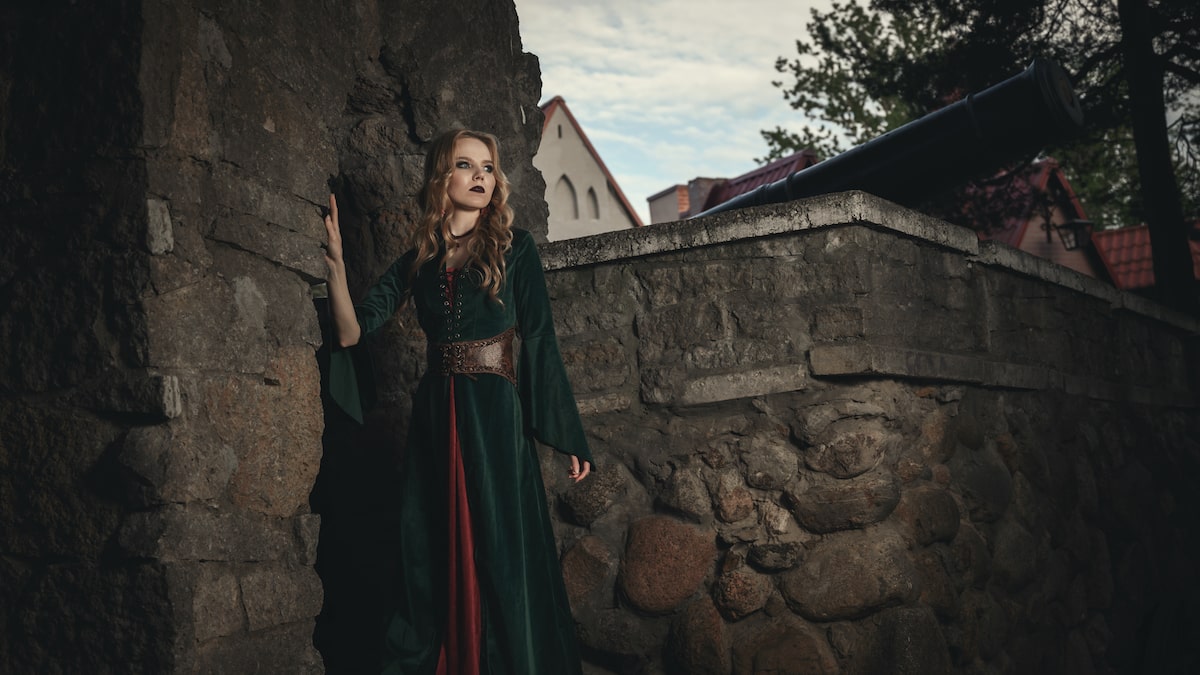 Dresses
Dresses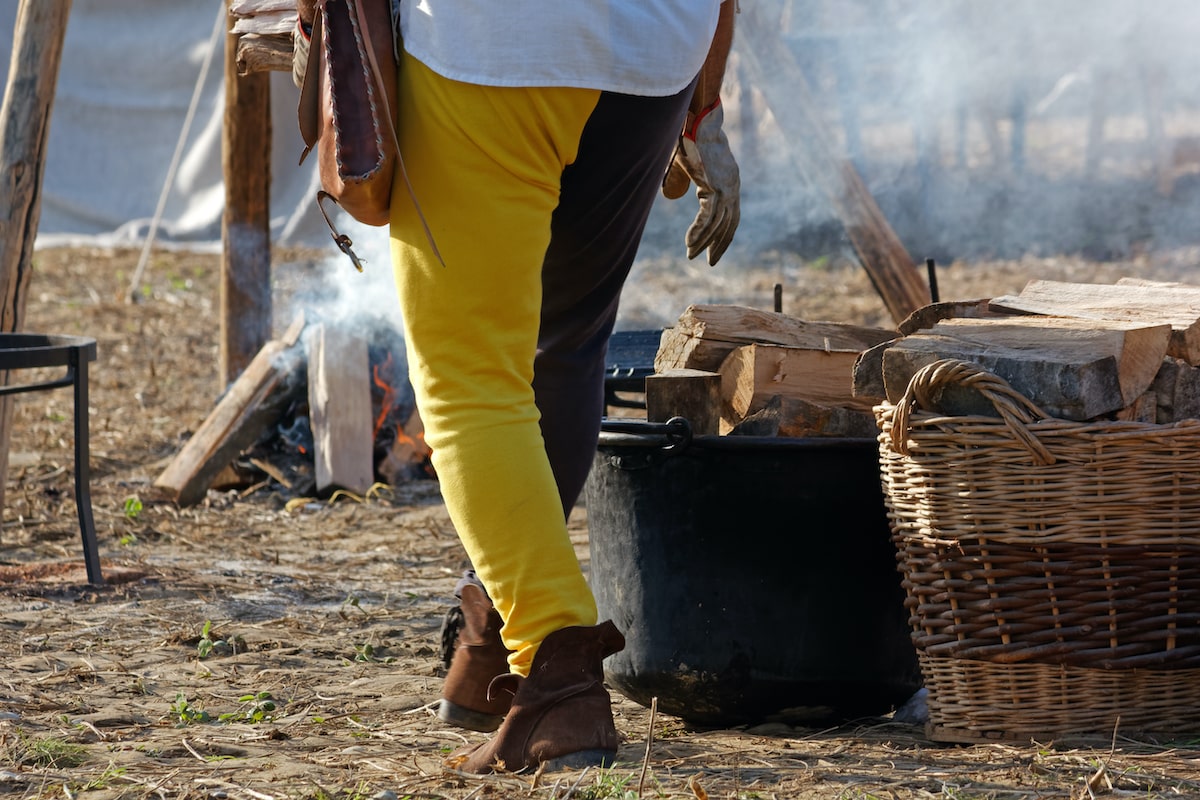 Pants
Pants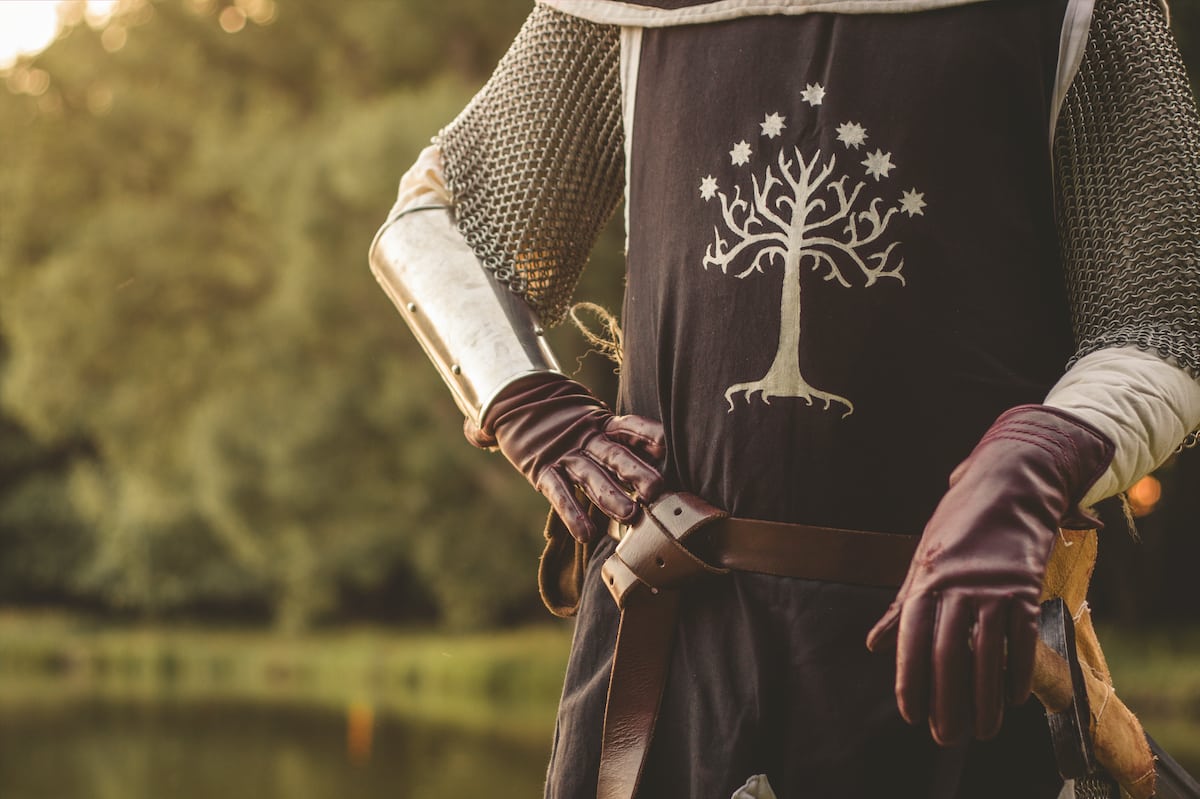 Gloves
Gloves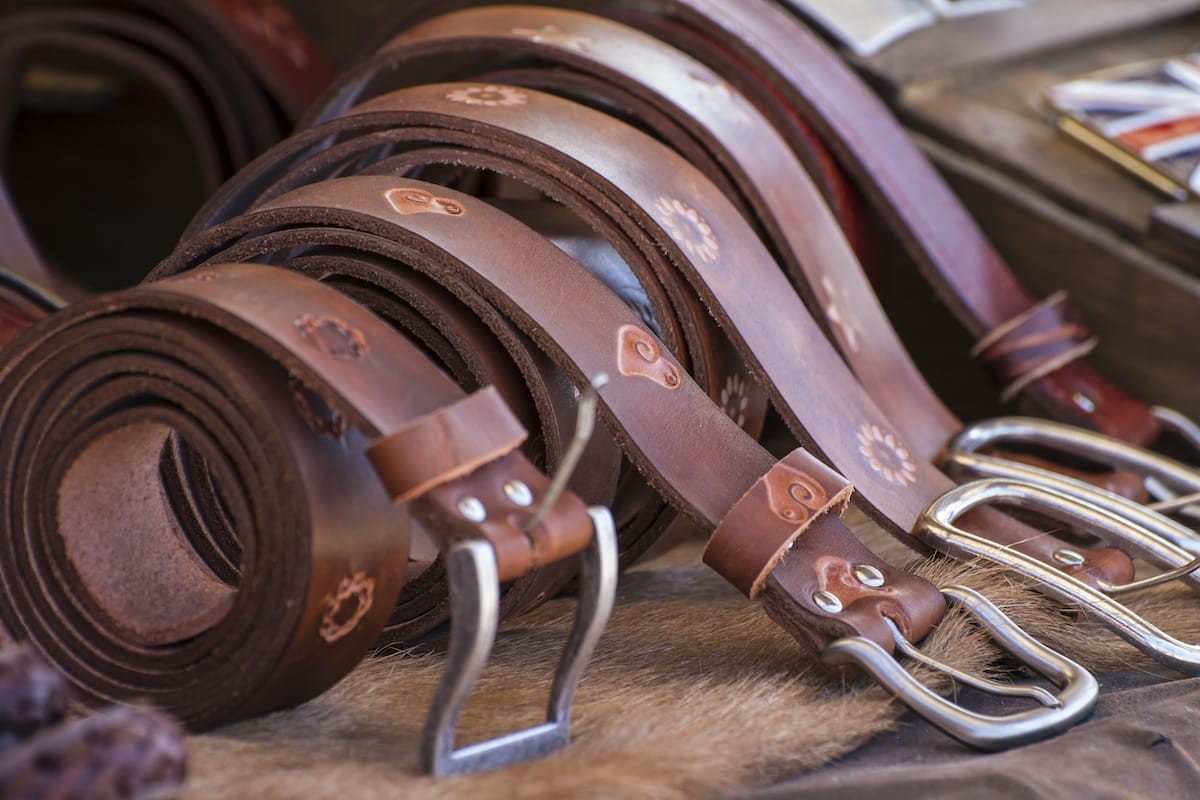 Belts
Belts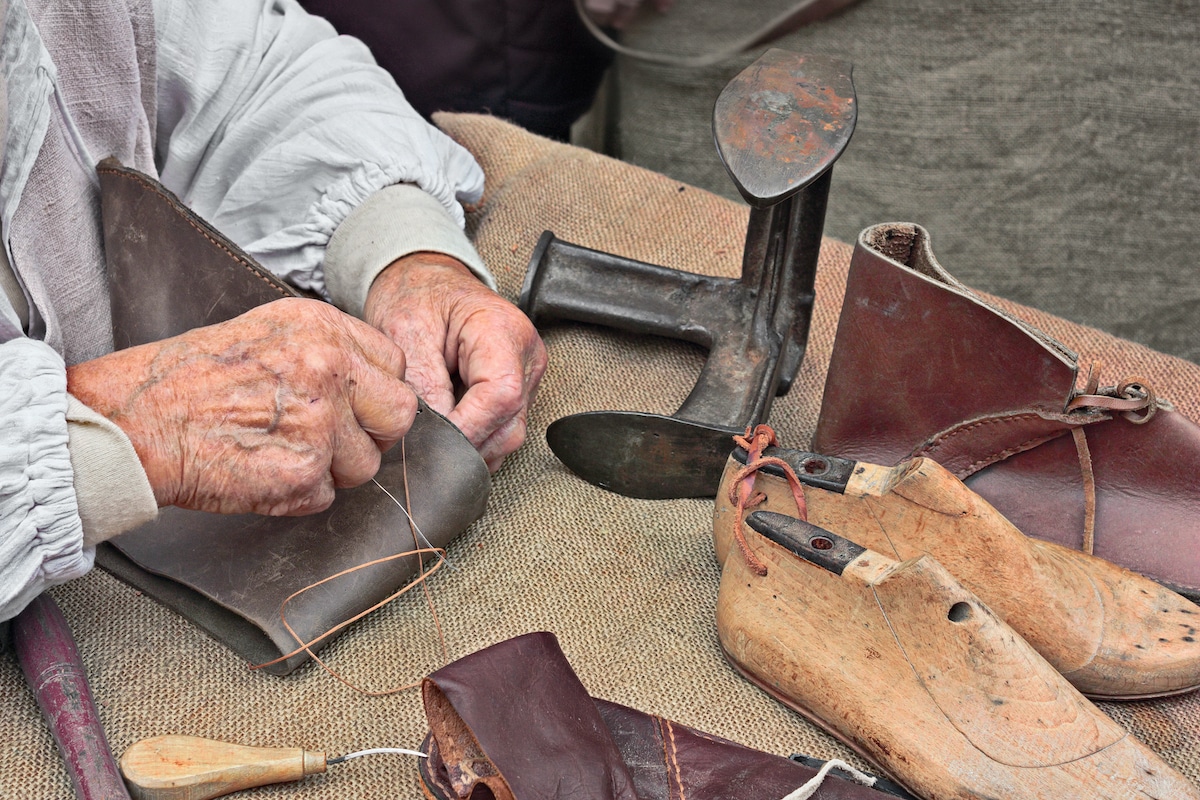 Shoes
Shoes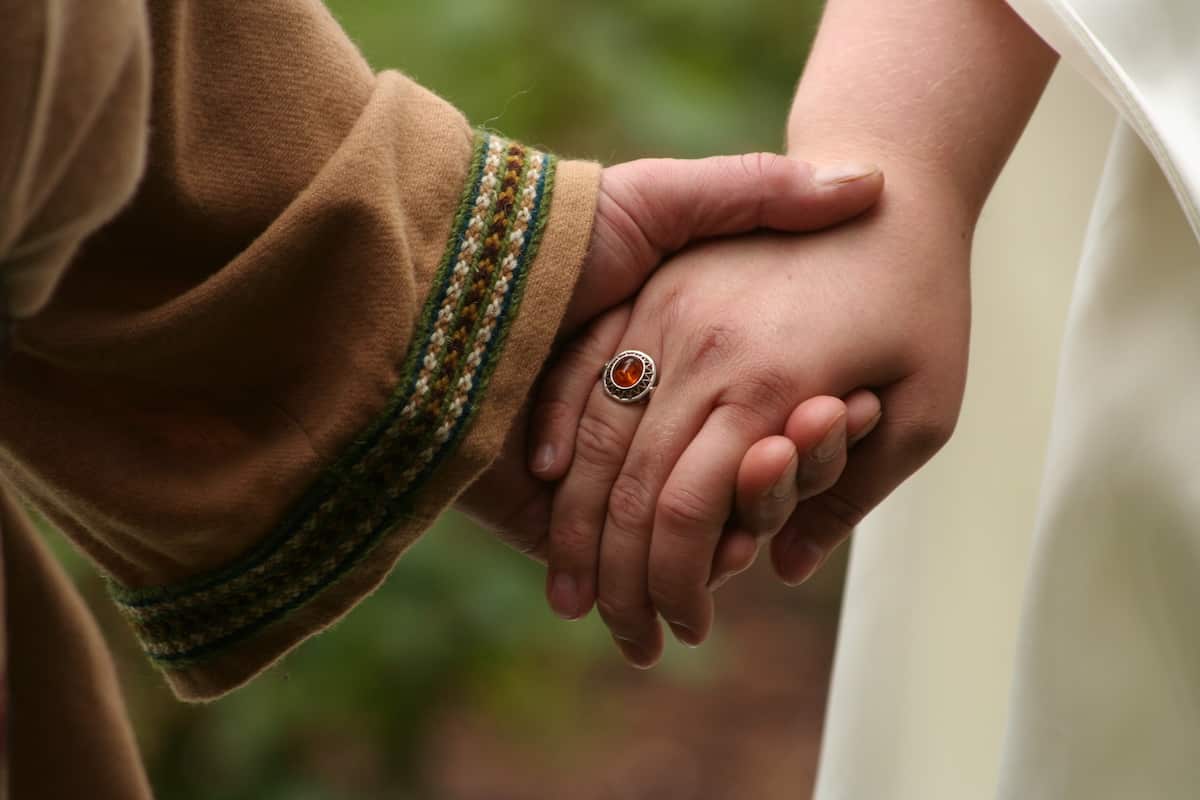 Rings
Rings Necklaces & Pendants
Necklaces & Pendants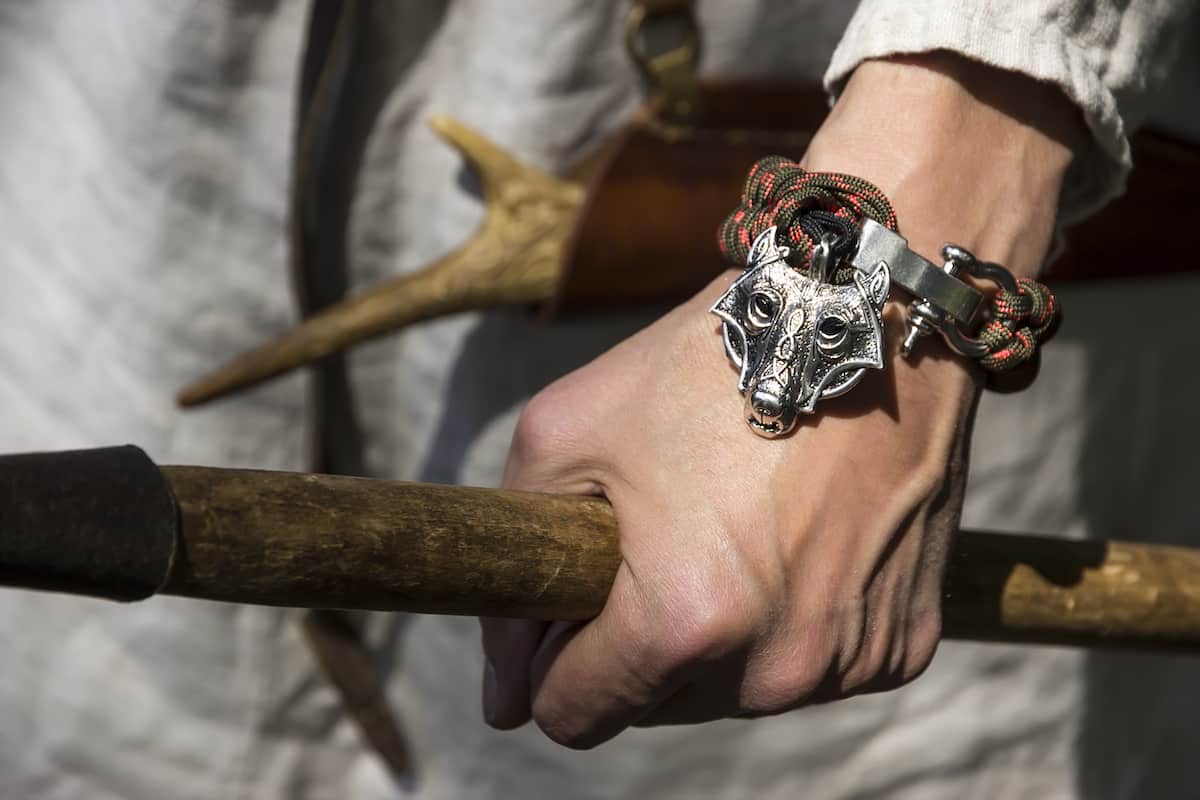 Bracelets
Bracelets